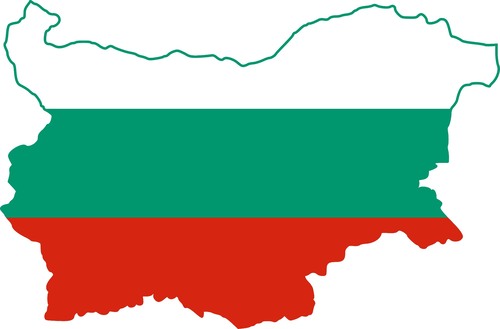
Kilka pytań do – część 16
Dziś mamy dla Was kolejny wywiad, tym razem z koleżanką, która przedstawi nam jak wygląda tworzenie dokumentacji w Bułgarii. Zapraszamy do lektury - na nasze pytania odpowiada Margarita Staneva.
How long have you been working as a Tech Writer?
16 years.
How did you become a Tech Writer?
By chance. Back in the beginning of the millennium, I completed my MSc in Chemistry and wanted to continue with a PhD. By that time, I already had a part time job as a tech writer, which I wanted to keep because I really loved it. When I started, I had absolutely no idea what technical writing is and that it is already a well-established profession abroad. My first experience as a technical writer was with software products for the Bioinformatics industry.
Can you tell us something about the company you work for and your team?
I've been with VMware for more than 10 years. I was one of two technical writers who worked for an outsourcing software company that got acquired by VMware. A decade later, the team has grown to 30+ writers and is the largest remote writing team in the department. Despite the fact that English is our second language, the team I helped build and develop, has earned the reputation of being one of the best writing teams in VMware. Our shared passion for technical writing motivated us to start a local community. In 2010 the VMware Bulgaria writing team organized the first Evolution of Technical Communication Conference.
How is your and your team’s work organized?
Technical writers are usually assigned to a functional area, a product or a group of products and most often work in teams. We are responsible for the end-to-end process for major, minor and update releases – planning, developing content, review and deployment to customers.
What tools do you use and what do you think about them?
VMware has a corporate DITA-based toolchain, but we also experiment with other tools and technologies. Sometimes, we create the tools we need. For example, writing product Release Notes was very difficult and time consuming. We identified an opportunity to automate significant parts of the process, hired an engineer and several months later came up with a prototype. The Release Notes Automation tool is currently a fully-fledged product used by all writers in the department as well as a self-help tool used by engineers and product managers who have no writing resources, but need the document for their releases.
How do you get the information you need to create documentation?
We use all available sources of information: internal documentation, subject matter experts, hands on testing of the feature or product, technical support feedback, Web analytics. It is not easy in a large company with teams that sit in different parts of the world and sometimes the only available way to communicate is email, because the time difference is too hard to accommodate. We sometimes joke that a technical writer needs to have the skills of a detective to be able to successfully track the right information.
What documents do you deliver, in what form, in which language and how are they published?
We write for a very technical audience and the types of deliverables we choose depend mostly on what our customers need. In addition to the more standard Installation, Configuration, and Administration guides, we create in-product help, programming and security guides, etc. Our DITA toolchain enables us to easily re-assemble information and generate documents in different formats (HTML, PDF, Word), and it also allows our Localization team to streamline the translation of product documentation. The publication process – the last step of our content creation effort in the day (or night) of the release – happens through the administrative interface of our documentation portal.
Do you participate in any other activities besides documentation writing (e.g., creation of marketing materials)? If yes, what is it and what tools do you use?
The benefit of working for a central organization is that you have a very clear charter and are not under pressure to take on all writing requests from engineering or marketing. It is in our charter, however, to create product or feature videos by using Camtasia.
What are the biggest challenges at your work?
Complexity and constant change.
What do you like the most in being a Tech Writer?
I love a lot of things in tech writing. It's like fitness for the brain - you learn something new every single day. And when you finally understand something very technical and complex, and manage to explain it with simple words in short sentences, you feel proud. You appreciate the clarity and elegance of the minimalistic approach. I guess that’s how I feel most of the time – someone who creates clarity and form from chaos.
What is your advice for those who want to begin their adventure with writing documentation?
Don't be scared if you don’t have a technical background. This can be learned and developed over time. If you love writing, find technology fascinating, and have good communication skills – give it a try! Chances are you and technical writing are a match. It can be challenging at times, but it is always interesting and you never get bored!
Jeśli chcecie skontakować się z Margaritą albo macie ochotę podzielić się swoimi doświadczeniami, piszcie śmiało na adres kontakt@techwriter.pl.